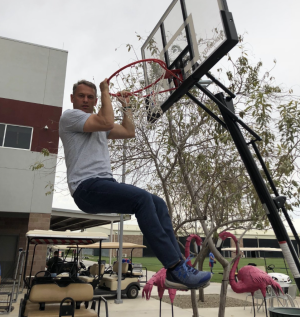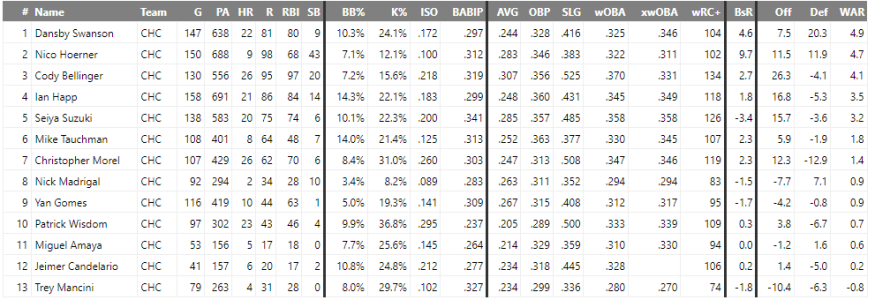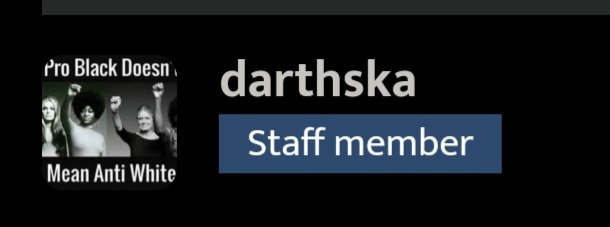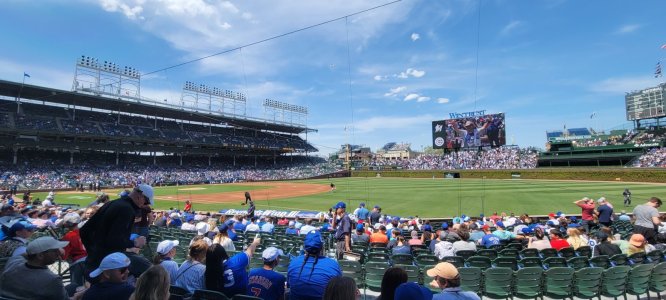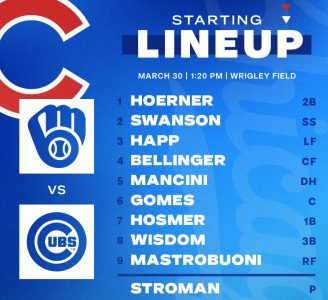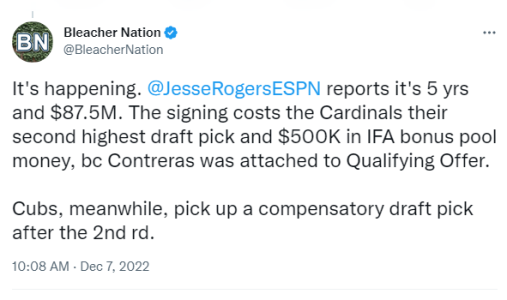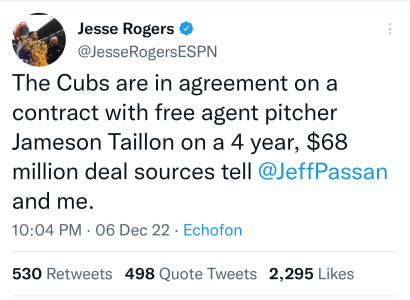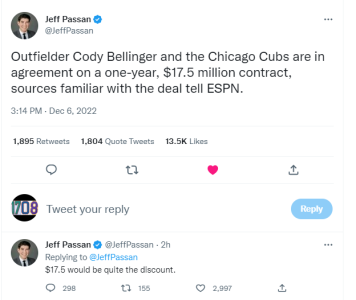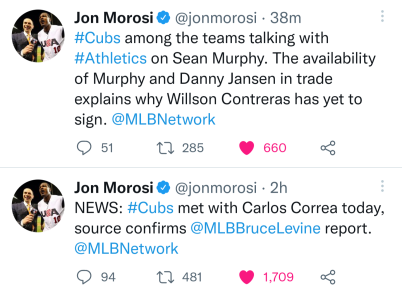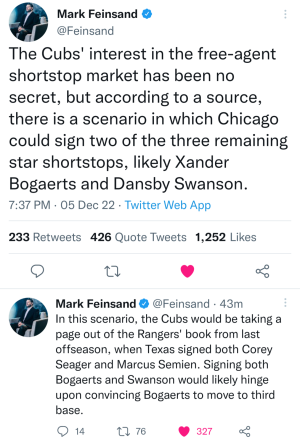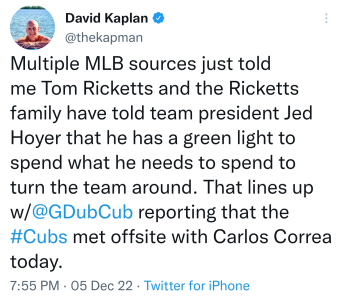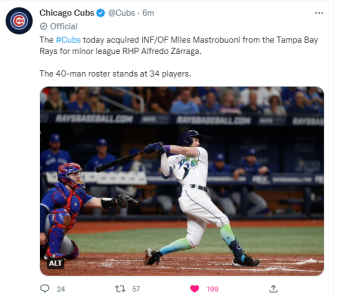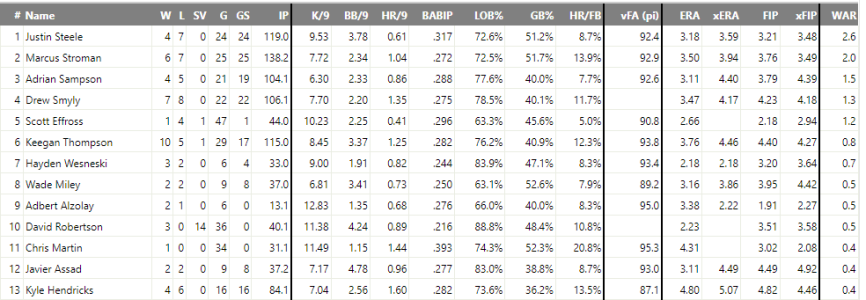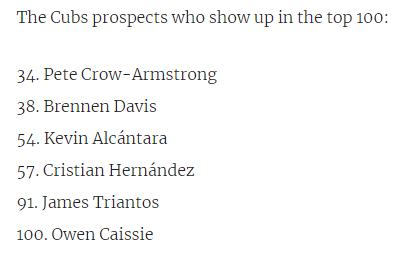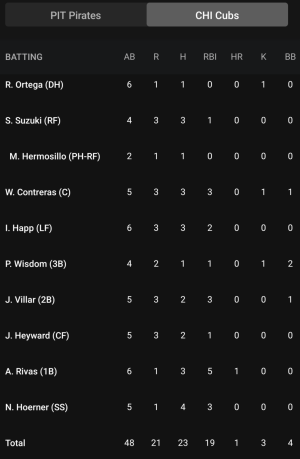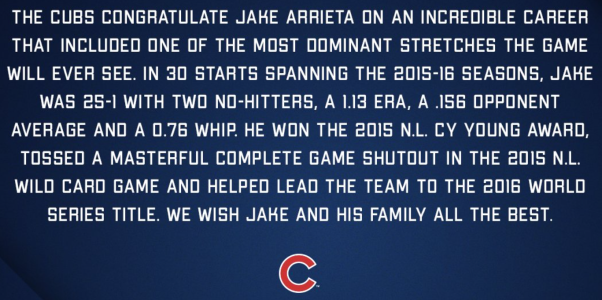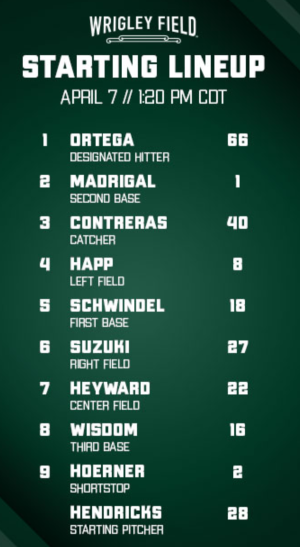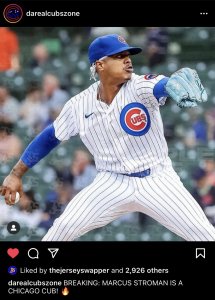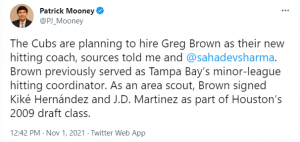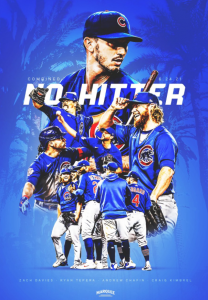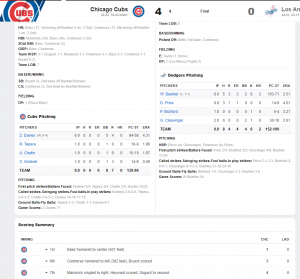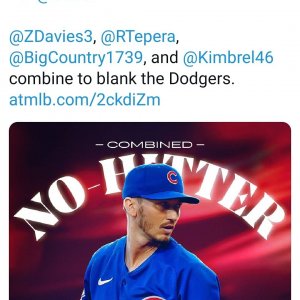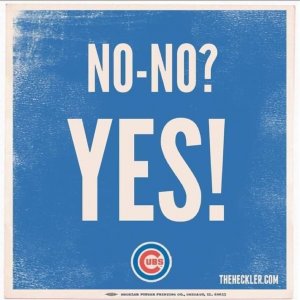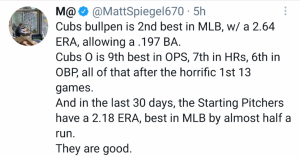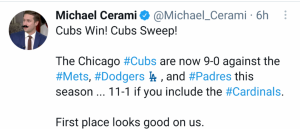MESA, Ariz. -- Everyone has had their say on third baseman Kris Bryant -- at least for this week. First, his agent Scott Boras, more than insinuated to USA Today and FOX Sports the Chicago Cubs are basically choosing money over winning. Then Bryant responded Wednesday morning by defending Boras.
But Bryant went one step further, stepping outside his normal personality a little bit.
"I'm hearing from teammates that they want me up and I'm doing well and everyone is telling me I'm progressing well," Bryant said. "It's kind of sending me mixed messages to me. But it definitely is refreshing to hear from teammates that they want me up there and other coaches around the league that I happen to know personally from the fall league and stuff who tell me how well I'm doing. I don't let it get to my head but it's nice to hear from your teammates and peers around here."
Is it that surprising that people outside of Cubs management are praising Bryant to his face? What else would they say? He is killing it this spring as he did last year in the minors. Their words don't mean he is or isn't ready for the big leagues. It also doesn't change the fact that this comes down to nine games as documented in this blog many times. Again, those nine games could mean a lot of money to Bryant and Boras, but in the larger scheme of things it's still just nine games.
"Cubs ownership has a choice," Boras said. "Are they going to present to their market that they are trying to win? Tom Ricketts said they were all about winning."
Boras has taken his jabs during the entire rebuilding process and more recently he's directed it toward the Cubs' plans with his star client. He's done it at general manager and winter meetings and basically whenever he's been asked about it. It's interesting that Boras always directs his anger at ownership and not Cubs' management. Do we really think Ricketts is driving the bus in the decision-making process when it comes to Bryant? Do we know if he's even aware of the specifics of service time and arbitration issues?
Maybe I'm being naïve, but waiting on Bryant for a couple weeks helps baseball operations as much as it saves money for Ricketts down the line. While you can't believe everything the Cubs are saying about the Bryant situation you can probably believe that it's Theo Epstein, not Ricketts, calling the shots here. Epstein made sure to say as much in his response to Boras.
"Ownership doesn't have anything to do with it,"Epstein told USA Today Sports. "We're making an organizational decision. And I'll be the one, as president of baseball operations, making the decision."
And this isn't to say it's not monetary in nature. Every team has a budget and Epstein knows every extra dollar spent on Bryant -- whenever that might be -- is a dollar less he can spend on someone else. Boras chides the Cubs for being concerned about something years from now, but isn't that a front office's job -- to look at the big picture?
That's not to say the Cubs are off the hook here. They're backing themselves into a corner by continuing to say Bryant needs work on his defense. They're not wrong. He does. But that has to mean more than a couple weeks in the minors, right? What would a handful of games in Iowa solve that extra time in the spring focused on defense or in the majors with big league coaches can't fix?
Are we to assume he's not ready defensively on April 5 but he will be on April 17? Or do the Cubs plan on keeping him in the minors even longer? We all know that a big bat is an easy tradeoff for an average glove. Heck, he's still more likely to end up in left field based on the Cubs' roster. They have an opening out there right now while a plethora of infielders can play third base -- the best of which, defensively, is Mike Olt who's having a good spring. Either way, Addison Russell is nearing the major leagues, adding another name to the infield mix.
But back to Boras and the choice he claims the Cubs have. He's right. They do have one. Their choice is to employ Bryant for six years, five months and two weeks until he becomes a free agent or just simply six years. And the assumption we can make off of that is Bryant will be much better in that seventh full year then he will be in the extra two weeks they would get out of him as a rookie if he breaks camp. And the Cubs, as a team, will be in their prime or near it more than they are now.
Sounds like an easy choice.
Boras needs to shut the **** up.





 of his young career. Heck, he’s 32nd in ISO overall, among our sample. For a young shortstop, Castro has quite a bit of pop.
of his young career. Heck, he’s 32nd in ISO overall, among our sample. For a young shortstop, Castro has quite a bit of pop.

